1957 Casa 1.131E Bücker Jungmann
Fully aerobatic category | Always hangered
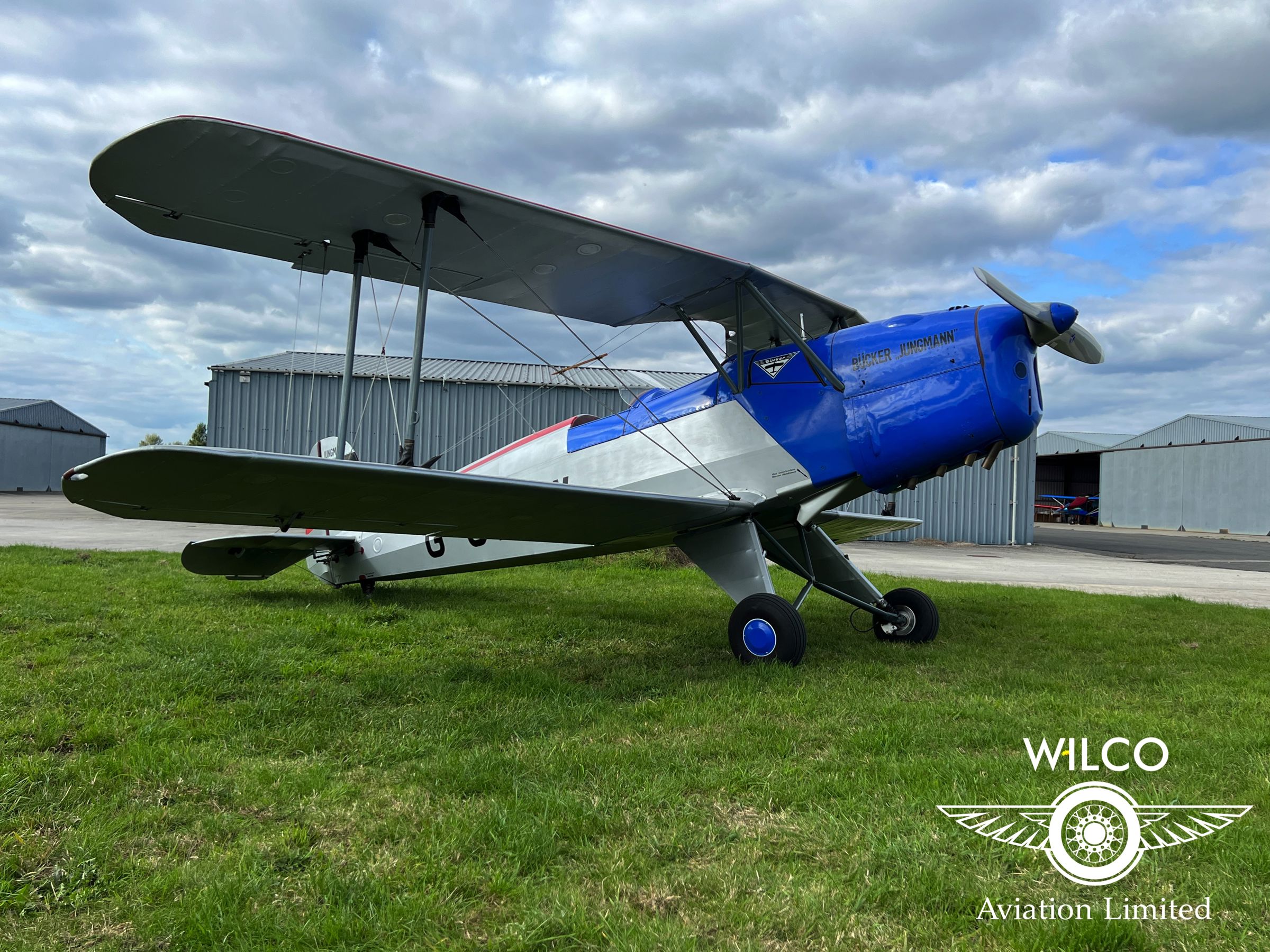
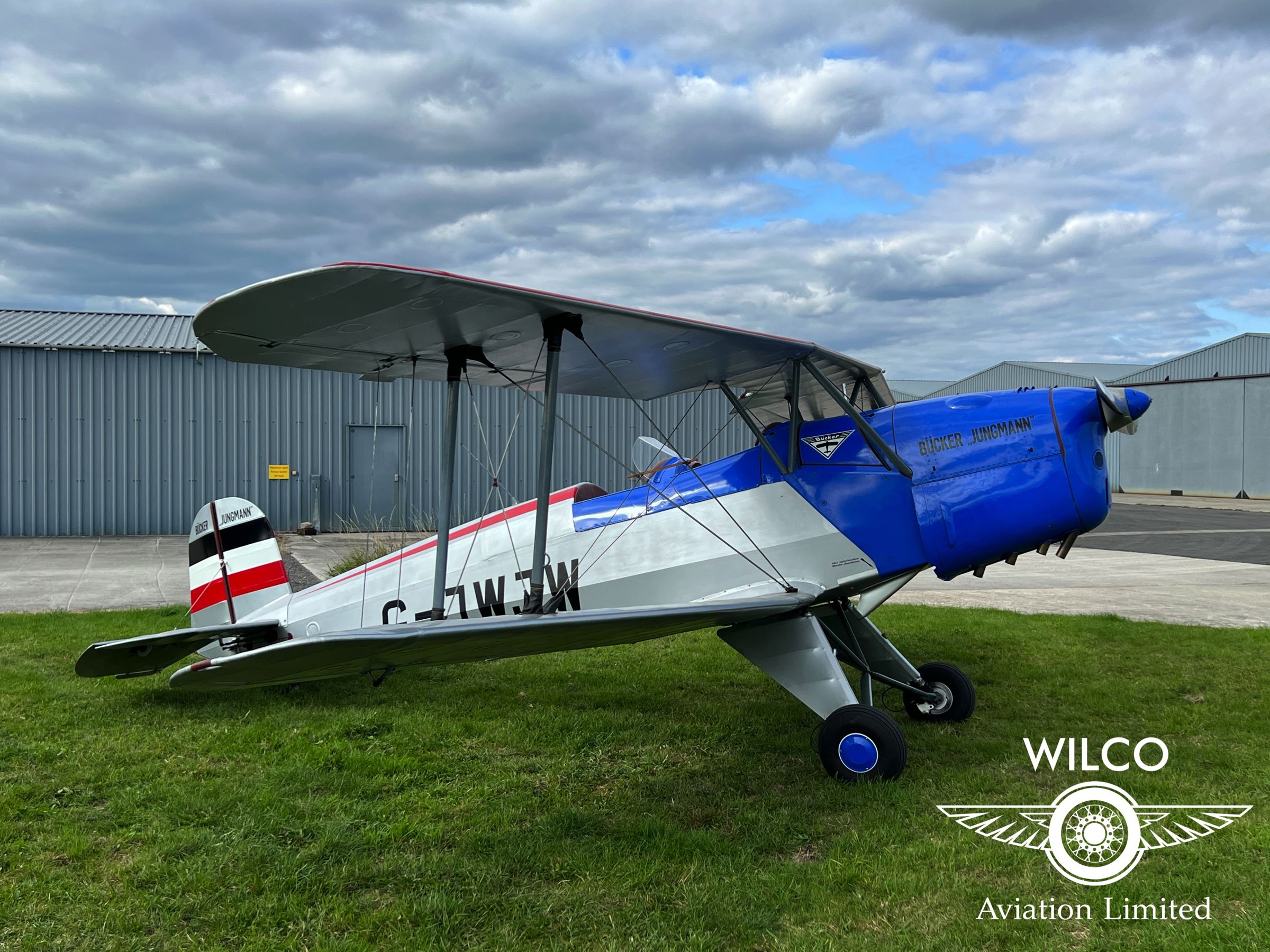
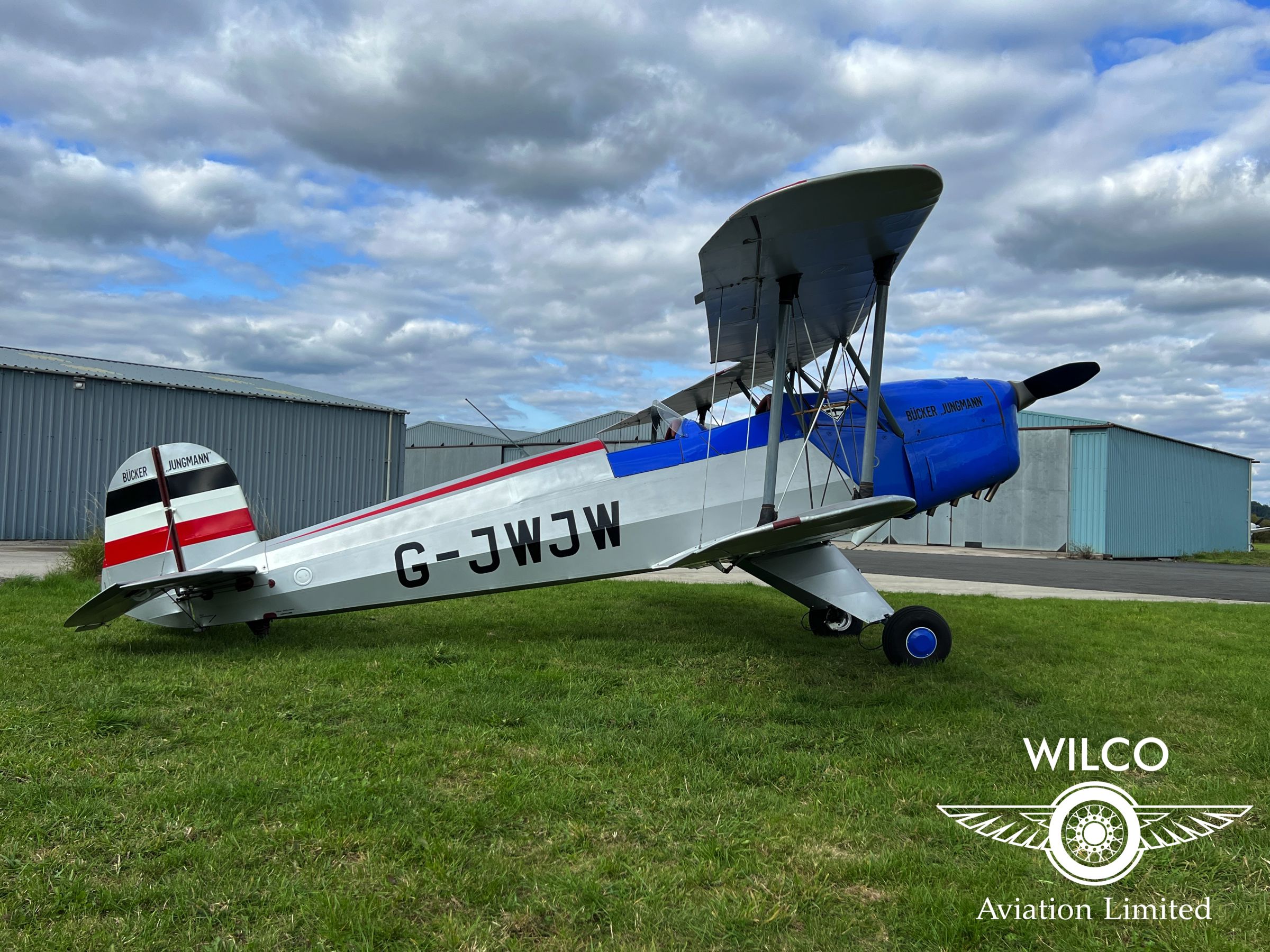
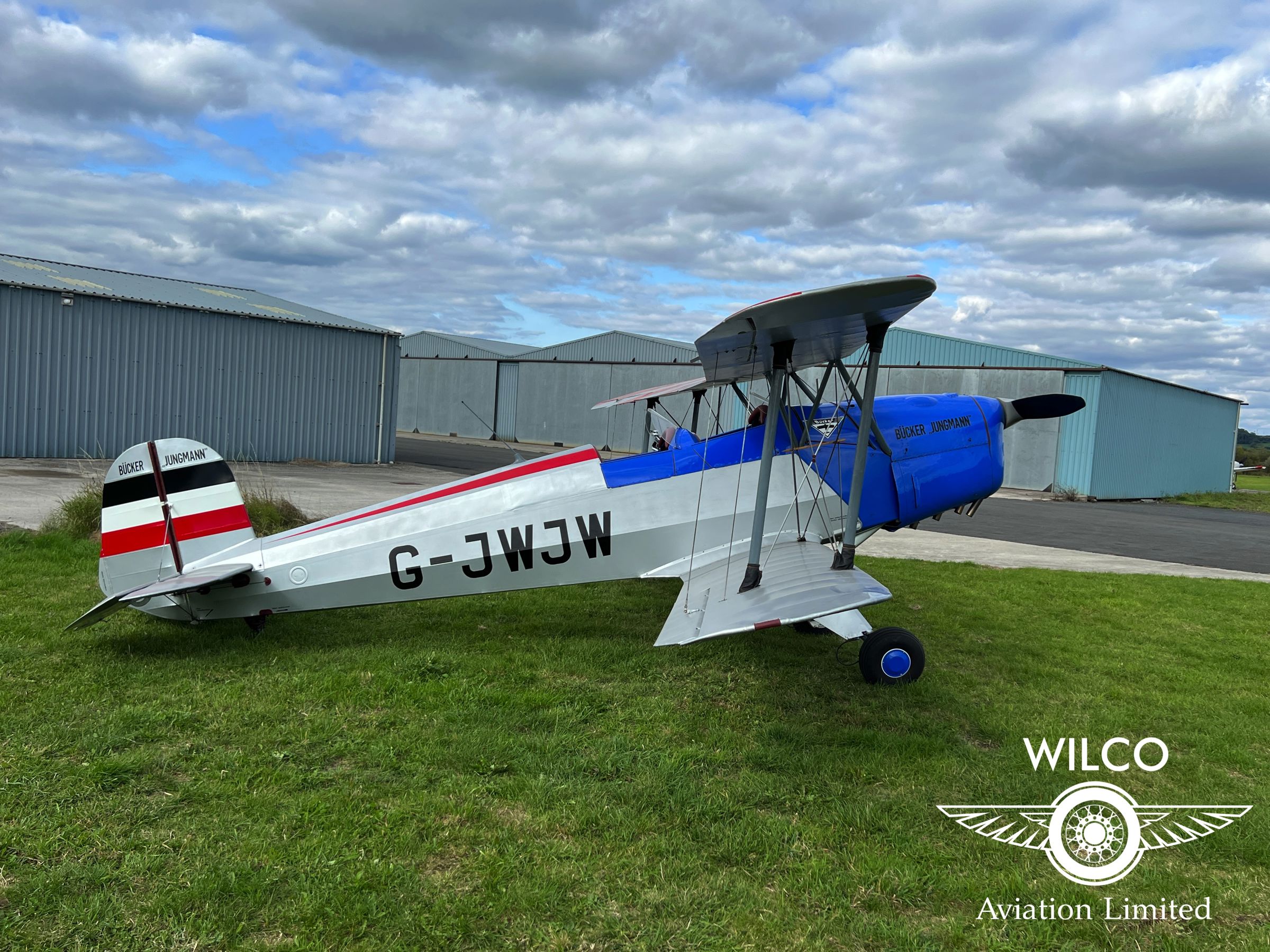
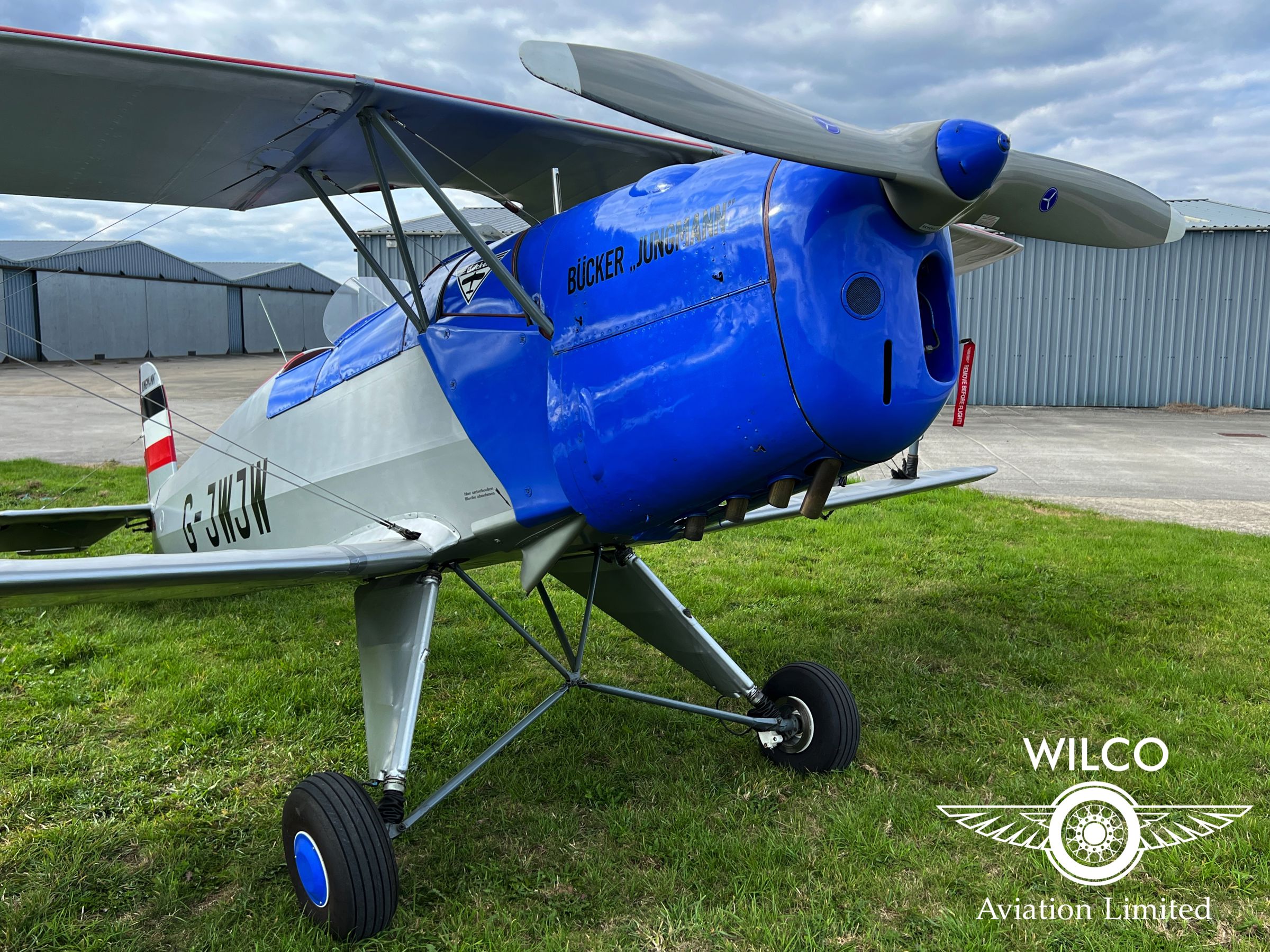
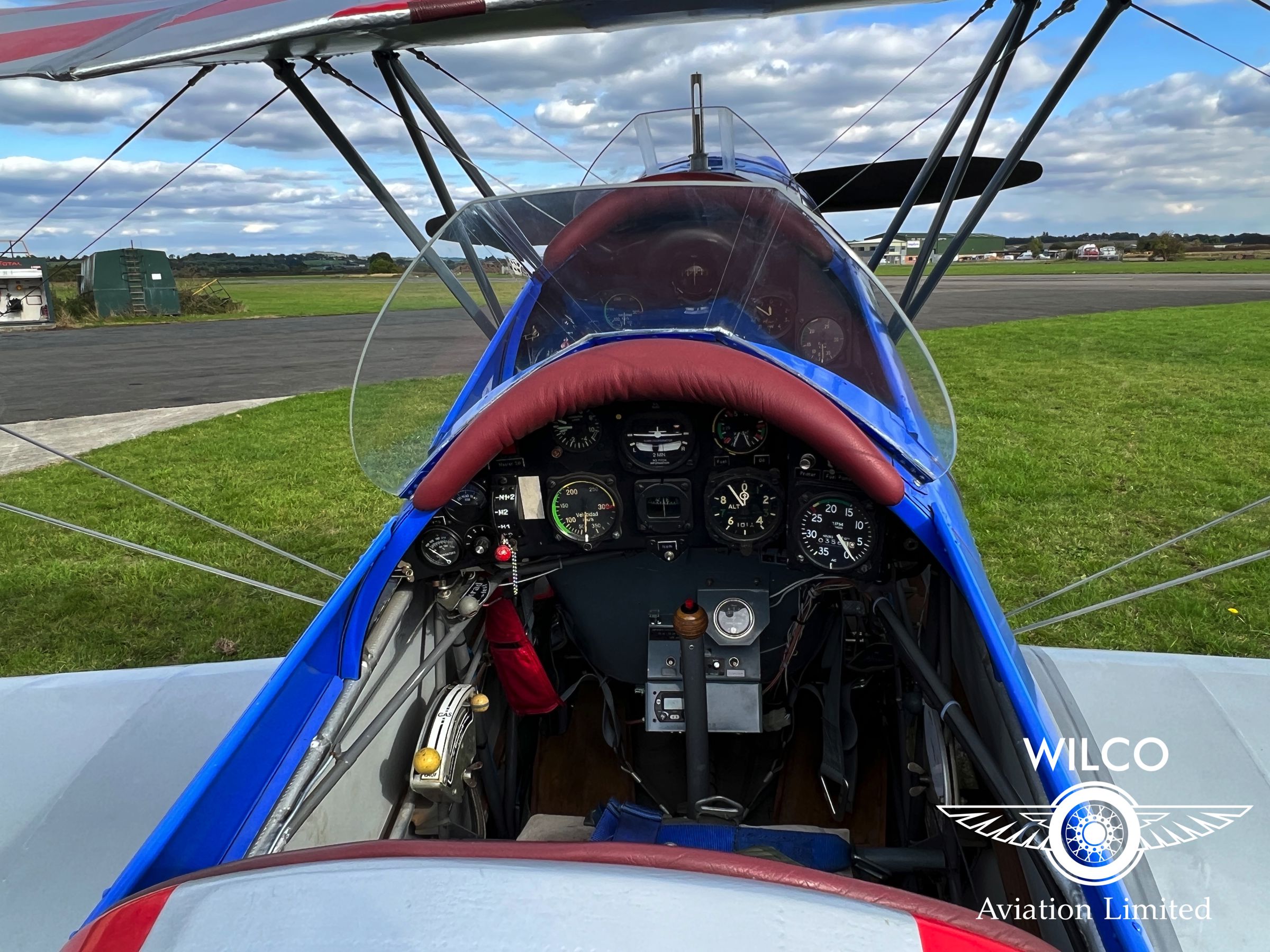
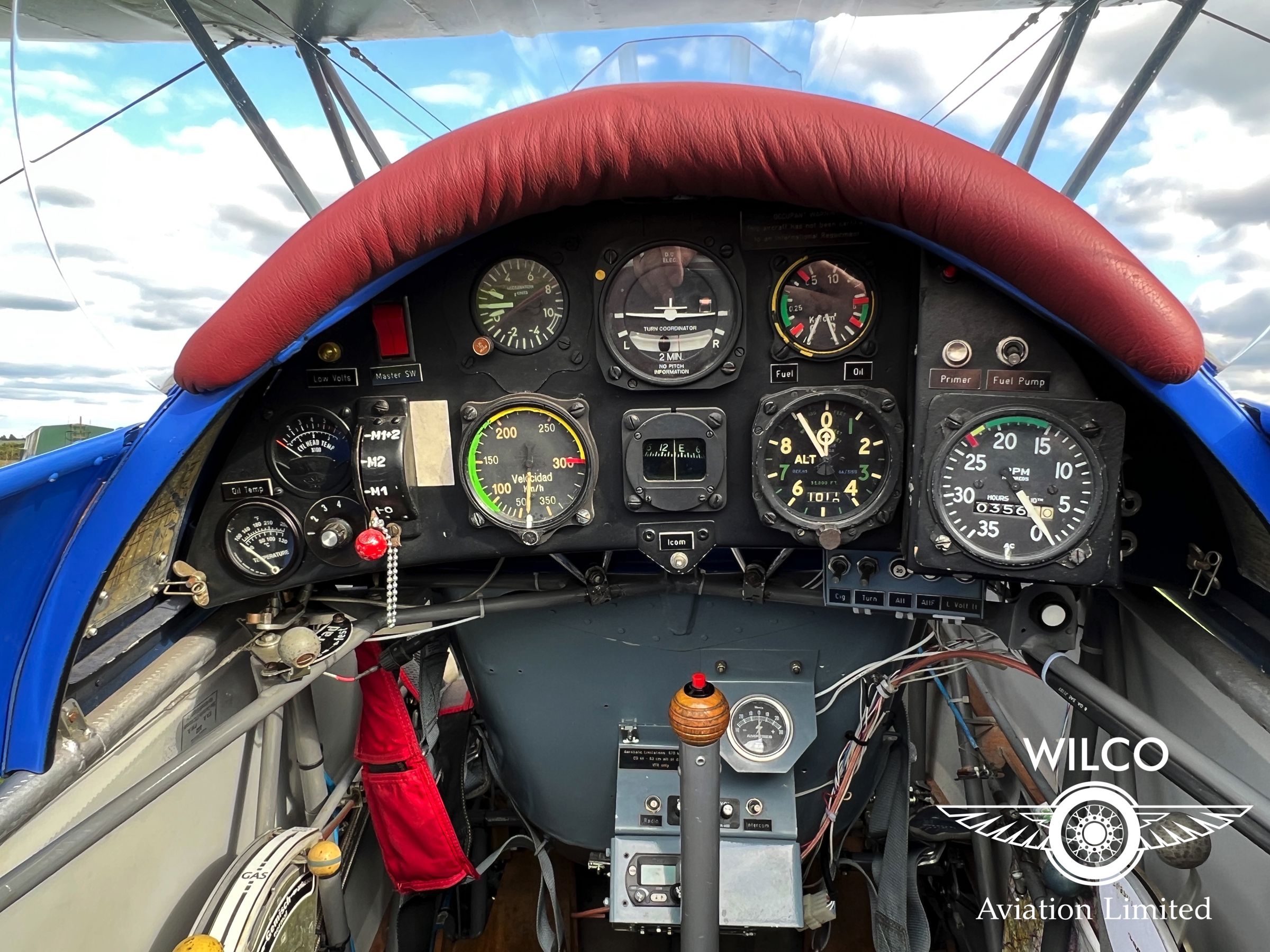
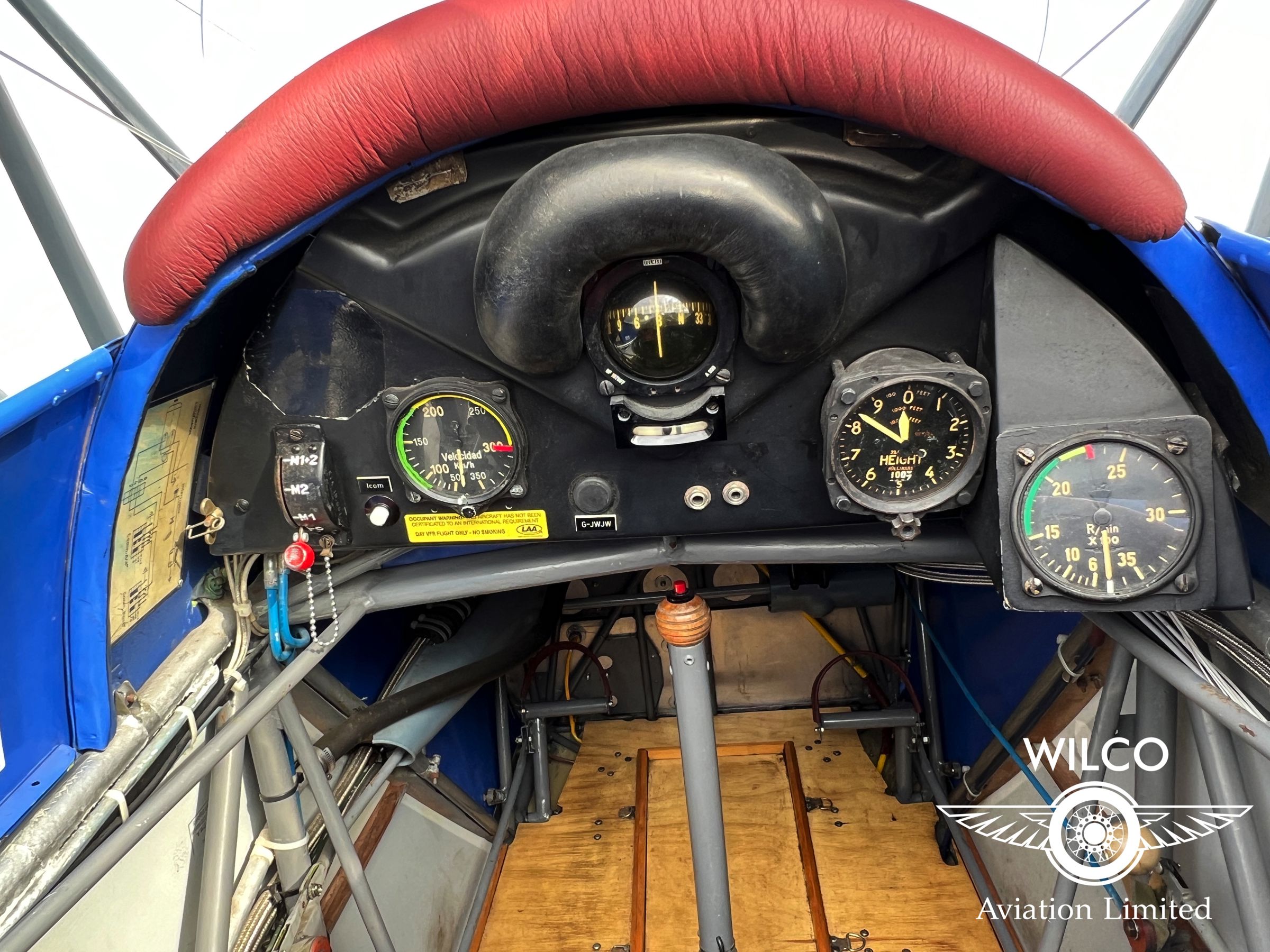
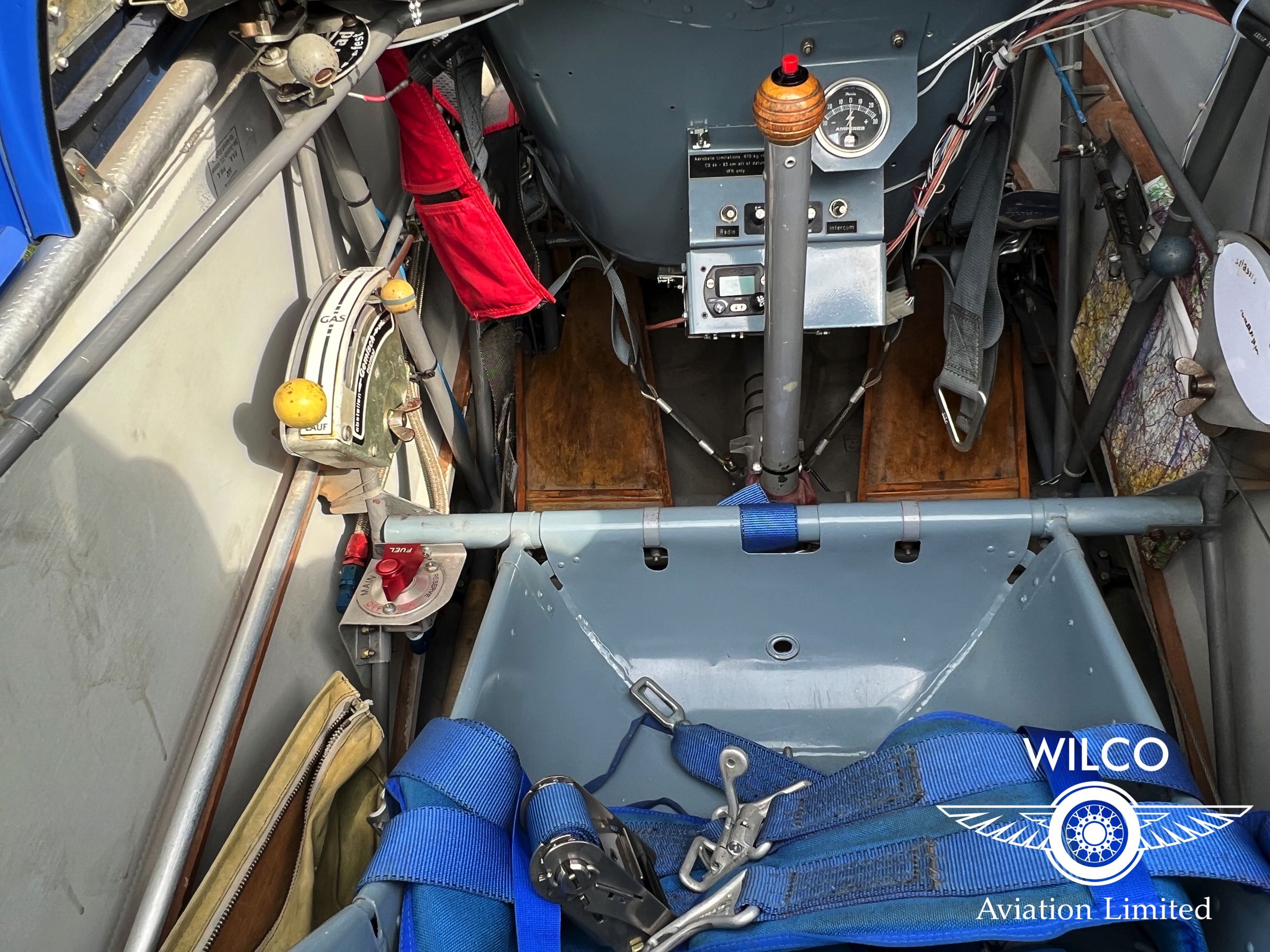
- Make
- Casa
- Model
- 1.131E Bücker Jungmann
- Year
- 1957
- Seller
- WilcoAviation
- Seller type
- Broker
- Location
- Henstridge, England, United Kingdom
- Condition
- Pre-owned
- Total Time
- 2269 h
- Engine Time
- 329 h
- Undercarriage
- Taildragger
- Seats
- 2
- Flight Rules
- VFR Day
- Serial Number
- 419
- Registration
- G-JWJW
Highlights
- We are delighted to have this very well kept and loved Bücker Jungmann for sale exclusively with Wilco Aviation and located with us at Henstridge Airfield, Somerset.
Exterior
- Exterior – 9/10
- Exterior: Silver, Blue and Red with Markings
Interior
- Interior – 9/10
- Interior: Traditional (leather cushions available)
- Rear 5 point hooker harness
Maintenance
- UK LAA Permit to Fly
- PERMIT: Valid to 25/07/24
- HANGARED: Always
- Airworthiness Until
- 07/25/2024
Specifications
- Seat Configuration
- 1+1
- Gross Weight
- 720 Kg
- Empty Weight
- 390 Kg
- Cruise Speed
- 90 Kt
- Fuel Capacity
- 60 l
Engine
- Manufacturer, Model
- ENMA, Tigre G-IV-B5
- ENGINE OVERHAULED: 24/04/2004
- Power
- 125
- TTSN
- 350
- TSOH
- 329
- OHD
- 04/24/2004
- Propeller
- Hoffman, HO23D-212B, 148K
- Type
- Fixed Pitch
- TTSN
- 273
Avionics
- COM
- Trig, TY91
- Intercom
- Sigtonics, SPA 400
- Standard instruments
- G Meter
- Turn Coordinator
- Volt Meter
- Air Speed Indicator (ASI)
- Altitude Indicator (AI)
- Oil Temperature Gauge
- Cylinder Head Temperature Gauge (CHT)
- RPM Gauge
- Compass
Safety equipment
- Harnesses
- Rear 5 point hooker harness
- Parachutes
- 2 x Parachutes
Ground equipment
- Cover
- Cambrai Aircraft Cover
Additional Remarks
- Juliet Whiskey started life with the Spanish military where she flew for 1835 hours before transferring to the German register in 1979 as D-EDWC. In 1992 the original Enma Tigre G-IV-A2 was replaced with the current Enma Tigre G-IV-B5. Having only flown 103hrs on the German register JW was moved to the Dutch register in 1997 as PH-MRK where she flew just shy of a further 4hrs before being purchased by her current owners of over 20years.
- When brought to the UK in 2001 the aircraft went through a full restoration including a recover of fabric and replacement of flying wires to Brunton stainless steel as well as having Cleveland brakes and wheels fitted. The engine was top end overhauled and whilst works were underway an Ellison EFS-4 Carbruettor, Christen oil separator, electric fuel pump, Andair gascolator, a B&C SD 20 20amp alternator and an electric turn coordinator were fitted. Ignition harnesses have been replaced with Slick leads to enable REM37BY Champinon plugs to be used.
- The aircraft was designed by Carl Bücker and Anders J Andersson at Bücker Flugzeubau GmbH, which they formed in October 1933, in response to a tender issued by the Reichsluftfahrministerium for a trainer in the 80 h.p. category. The prototype Bü 131 flew on April 27 1934 after only 6 months in design and build. It was selected as a trainer for the Deutscher Luftsport-Verband and production of the Bü 131 A was rapidly established.
- In Spain well over 100 German-built Jungmanns were delivered to the Nationalist forces before Construcciones Aeronauticas SA (established in 1923) began licence production of the Bü 131 B at Cadiz in 1938 – under the designation C.A.S.A. 1. 131-E. In total 530 a/c were manufactured for the Spanish Airforce as elementary trainers (designated E-3B). In the 1970’s they were decomissioned and sold in a public auction by the Ministry of defense.
- G-JWJW as it is now known was probably built in 1954, though the starboard upper wing has a date on the spar of 12/3/1949. The aircraft served with Maestranza Aerea, Albacete until 1973 and then with 781 Escuadron Granada until 1974 when it was decommissioned with 1835 hrs on the log. It is powered by an ENMA (Empresa Nacional de Motores de Aviacion, SA) Tigre engine of 150 h.p.
- JW has been painted in the colour scheme of one of the first Jungmanns to be seen in England, attending the International Flying Meeting at Lympne, Kent, in August 1935.
- In 1933 by order of Reichsminister der Luftfahrt Goring, all civil-registered aircraft had to display the Nazi swastika Hakenkreuzflagge on the port side. The national black-white-red “schwarzweissrote Flagge” was retained on the starboard side as a courtesy to President von Hindenberg until soon after his death in 1934 when this too was replaced by the Hakenkreutzflagge. Juliet Whiskey still displays the schwarzweissrote Flagge but this has been covered in the photographs for a sensitive nature.
- G-JWJW benefits from being in the fully aerobatic category with inverted fuel and oil systems.